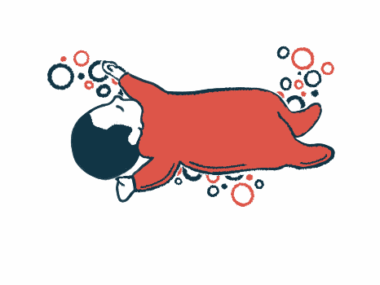‘Vague’ AIP symptoms underscore difficulty with diagnosis
Woman, 18, had attacks that were precipitated by onset of menstrual cycle
Written by |

The case of a young woman with recurrent abdominal pain who was diagnosed with acute intermittent porphyria (AIP) underscores the difficulties diagnosing a rare disease that sometimes has vague and variable symptoms, said researchers in a recent case report.
The woman’s menstrual cycle was a trigger for the pain attacks, for which preventive treatment during her cycle was used to help keep her symptoms at bay.
“AIP presents a complex clinical challenge requiring high clinical suspicion for effective diagnosis and management,” the researchers wrote in “Unveiling the Chameleon: A Case Report on Acute Intermittent Porphyria,” which was published in Cureus. “Timely diagnosis improves a patient’s quality of life and can decrease overutilization of healthcare resources.”
Porphyria refers to a group of rare disorders caused by the lack of certain enzymes needed for producing heme, a molecule that’s essential for oxygen transport. As a result, heme precursors called porphyrins accumulate to toxic levels.
In AIP, patients have a mutation in the HMBS gene that leads to a deficiency in the activity of porphobilinogen deaminase (PBGD), an enzyme. This deficiency predisposes patients to sudden and sometimes severe attacks that may manifest with a range of symptoms, including abdominal pain and neurological dysfunction.
The attacks are often triggered by environmental factors, such as medications, dietary changes, infections, or hormonal fluctuations. While men and women may have predisposing HMBS mutations, AIP attacks are more common in women, which may be related to hormone fluctuations during the menstrual cycle.
It’s important to diagnose the condition as soon as possible because its symptoms can be severe or life-threatening. However, “diagnosing AIP is often challenging and delayed due to its vague symptoms that resemble other conditions,” wrote the researchers, who described the diagnostic odyssey of a young woman with AIP who was having recurrent abdominal pain.
No physical cause found ahead of AIP diagnosis
The woman, 18, had been previously hospitalized for pain before going to the researchers’ hospital. At that time, she said she was under stress due to her college exams and was following a gluten-free diet for presumed celiac disease. A medical cause couldn’t be found for the pain and she was sent home with a suspected psychiatric cause.
At the researchers’ clinic, the woman said the pain had led to nausea, vomiting, and being unable to eat. She said she’d intermittently seen blood in her urine and had tingling in her fingertips.
A battery of tests found no physical cause for her symptoms, which she continued to have despite taking painkillers.
The woman was diagnosed with acute adjustment disorder and anxiety after a psychiatric evaluation, and began medications to manage anxiety and bowel symptoms. She was sent home.
The doctors sent the woman’s blood and urine samples for analysis because of her symptoms. The results showed she had elevated levels of porphyrins in both. Analyses also indicated she had low PBGD activity levels, along with a HMBS gene mutation, confirming an AIP diagnosis.
“Given the nonspecific nature of AIP symptoms, part of the diagnostic process involves ruling out other conditions that can present with similar symptoms, including other gastrointestinal disorders, neurological conditions, and psychiatric illnesses,” the researchers wrote.
The woman continued to have frequent AIP attacks over the next few months that required oral glucose and hemin infusions, standard porphyria treatments.
Researchers suspected her attacks were partly precipitated by ovulation during her menstrual cycle. To better manage her symptoms and control the side effect of weight gain from oral glucose, she was started on preventive premenstrual hemin infusions, along with monthly injections of Givlaari (givosiran), an approved porphyria therapy.
The woman’s symptoms began to be managed with this regimen, which let her return to her schooling without disruptions or hospital stays.
“Further research is needed to optimize AIP’s long-term management and explore the full potential of emerging therapies,” the researchers wrote.






